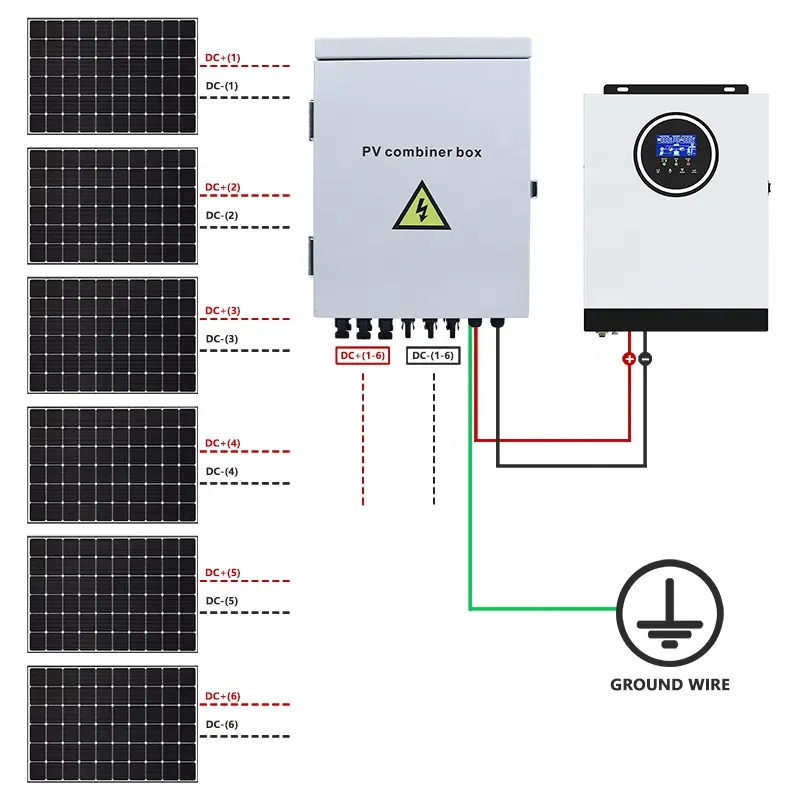Understanding the Role of PV Combiner Boxes in System Monitoring and Fault Isolation
Beyond electrical combination, the modern PV combiner box serves as a critical node for monitoring and managing photovoltaic system performance. With increasing demands for safety, uptime, and efficiency, smart combiner boxes now integrate advanced features like real-time data logging, remote fault alerts, and temperature sensors.
1. What Is System Monitoring?
System monitoring refers to tracking the performance, status, and safety parameters of each PV string, DC line, and component within the combiner box.
2. Monitoring Technologies
- Hall-effect sensors for current measurement
- Voltage measurement modules
- Temperature probes for ambient and enclosure temperature
- RS485/Modbus or Ethernet communication ports
- GPRS/4G for remote off-grid systems
3. Common Monitoring Parameters
- String-level voltage and current
- Total output current and voltage
- SPD health status
- Cabinet door status
- Over-temperature alarms
4. Fault Isolation Capabilities
Combiner boxes assist in isolating:
- Short circuits in individual strings
- Blown fuses or tripped breakers
- SPD failure
- Ground faults
- Overcurrent conditions
5. Use Cases by System Type
5.1 Residential:
Basic fuse protection and occasional monitoring via inverter interface
5.2 Commercial Rooftops:
String-level monitoring for asset optimization and safety
5.3 Utility-Scale Plants:
SCADA integration, predictive analytics, and redundancy control
6. Integrating Smart Monitoring
- Select combiner boxes with built-in monitoring boards
- Ensure compatibility with your inverter’s data platform
- Deploy centralized logging and alerting systems
7. Economic Benefits
Real-time monitoring can prevent faults, reduce truck rolls, and maximize power output.
8. Conclusion
As solar systems scale and diversify, monitoring and fault isolation features in PV combiner boxes are no longer optional—they’re essential. Smart solar starts with smart hardware. Make the investment early for peace of mind and long-term savings.



